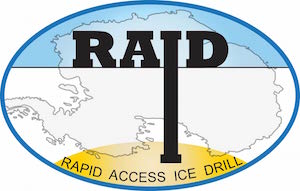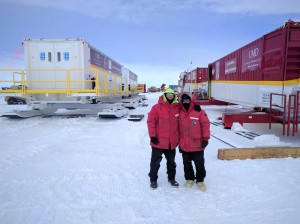
Happy RAID crew with near-complete modules!
As of today, we are 99% ready for traversing out to Minna Bluff! The crew working under Chris has done an exceptional job getting everything ready, and they’ve also had good support in turn from the McMurdo Station staff to lift modules onto skis with a crane, tune up the generators, prep for the traverse, and train Chris and Rich as tractor operators. It has to be a coordinated effort, and like most work in Antarctica everyone pitches in to make it all work. So we’re on schedule and almost ready to go. Three cheers!
The traverse is scheduled to head out on Wednesday, November 23rd. That’s the day several of us (John, Jeff and Blaise) will just be arriving in McMurdo on our ‘ice flight’ from Christchurch, so it’s mostly likely we will not overlap with the traverse crew before they head out. We have to take virtually everything out to the test site on traverse, which consists of heavy track vehicles – tractors – pulling our five RAID modules plus flat decks for other cargo and equipment. We’ll also drag flexible bladders of diesel fuel. In addition, there will be a couple of cozy buildings on skis to provide berthing for the camp crew. Side note, we’ve had a few chuckles getting everyone on the same page that we will have ‘berthing’ and not ‘birthing’ units. Anyone from Minnesota will appreciate that these are just bigger-than-average ‘fish huts’ like what we use for ice fishing. The rest of us will live in platform or small mountain-style tents. Once the traverse arrives and sets up camp at Minna Bluff, most of us will move in and out by helicopter.
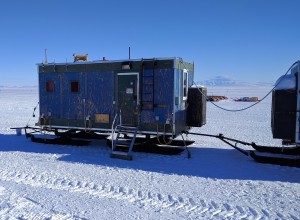
This is one of the mobile camp units we’ll use for berthing and as a galley.
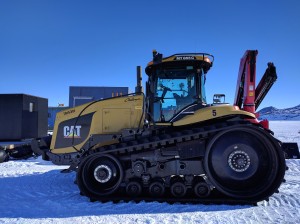
A tractor used to pull our sleds.
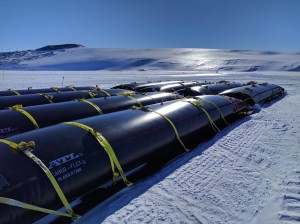
Fuel bladders used to carry bulk diesel fuel. Eventually we’ll also carry drilling fluid like this.
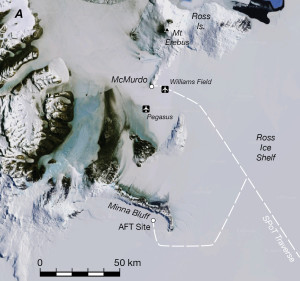
Satellite image of the area near McMurdo Station and our test site at Minna Bluff (AFT). South Pole traverse route shown by the dashed white line.
Our traverse route to Minna Bluff departs from near Willy Field on the McMurdo ice shelf and initially follows the over-snow route that is used to transport equipment and fuel up to the station at South Pole. The total distance is about 100 kilometers to our test site. We follow the South Pole traverse (SPoT) route about half of that distance, and then branch off toward Minna Bluff. The last part of that crosses a set of shear zones and highly crevasses areas formed by flow of ice that originates in the Mulock and Byrd glaciers and then pushes as ice streams into the Ross ice shelf. Deformation of ice around Minna Hook is incredible! An advance team last year did a reconnaissance out to our test site, winding their way through crevasses and filling in some areas so that the tractors and sled-borne equipment can pass. The traverse crew will use ground-penetrating radar (GPR) to look for hidden crevasses that are ‘bridged’ with snow so they can avoid driving over wide cracks. There are plenty large enough to swallow vehicles, yet they can be very difficult to see from the surface.
Sadly, the RAID traverse will be going right past the spot where Gordon Hamilton, a glaciologist from the University of Maine, perished just a few weeks ago after an accidental fall into a crevasse. Many people in the science and Antarctic communities are mourning his loss. It shows that even with a lot of experience in the field and intimate knowledge of glacier mechanics, Antarctica always poses a risk to the people who dedicate themselves to science. Like everyone in the Antarctic program, we are cognizant of the risks in polar field work and will do everything we can to keep everyone safe.
